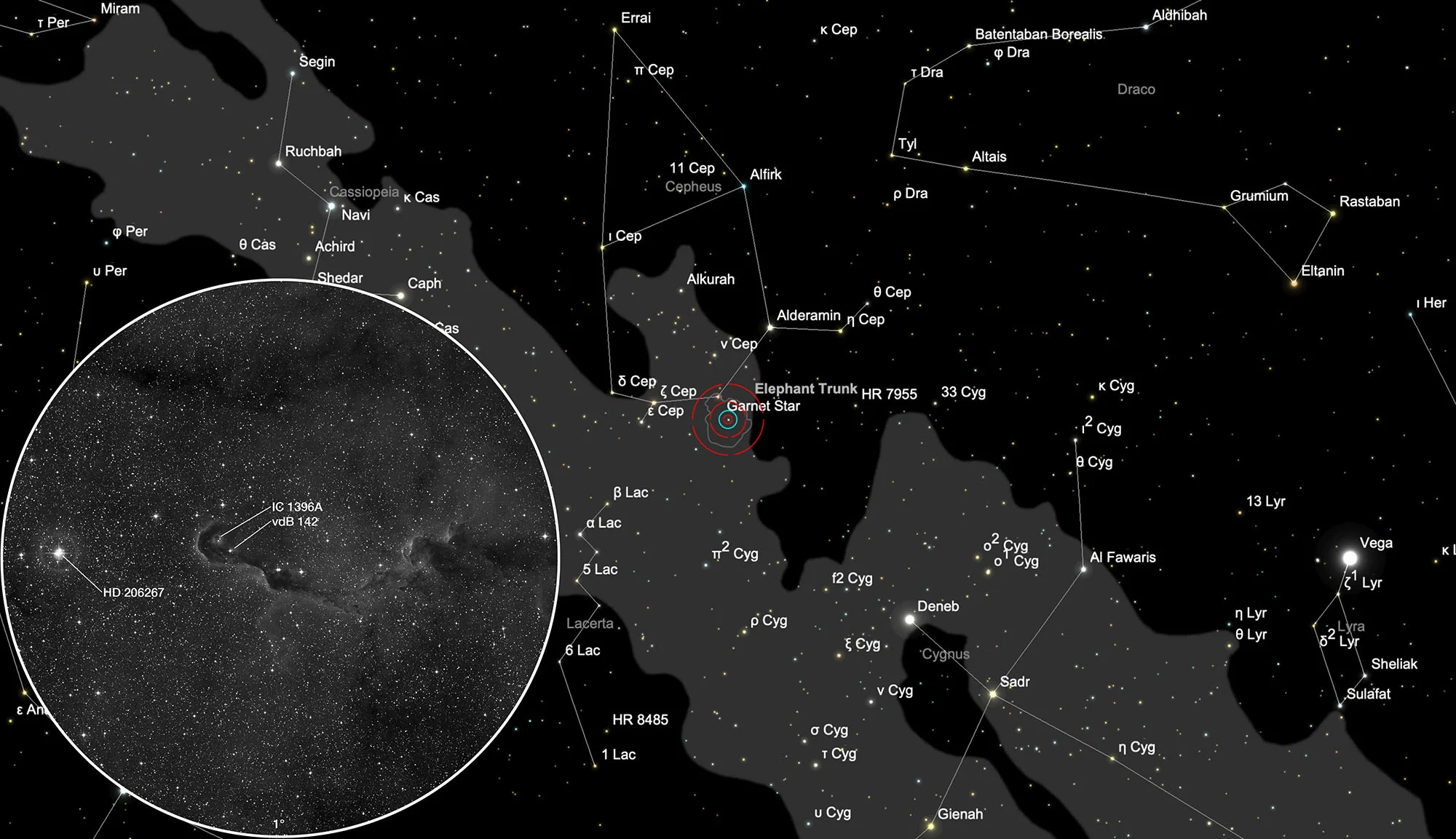Elephant Trunk Nebula (IC 1396)
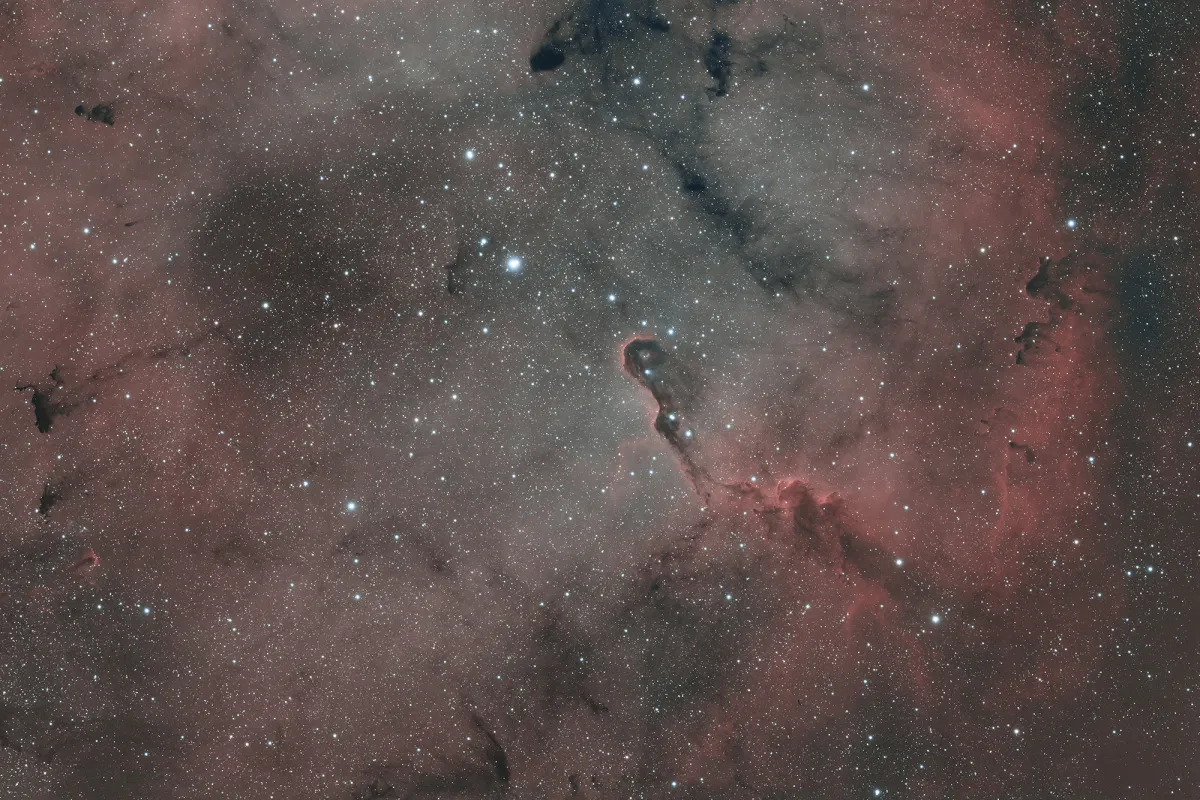
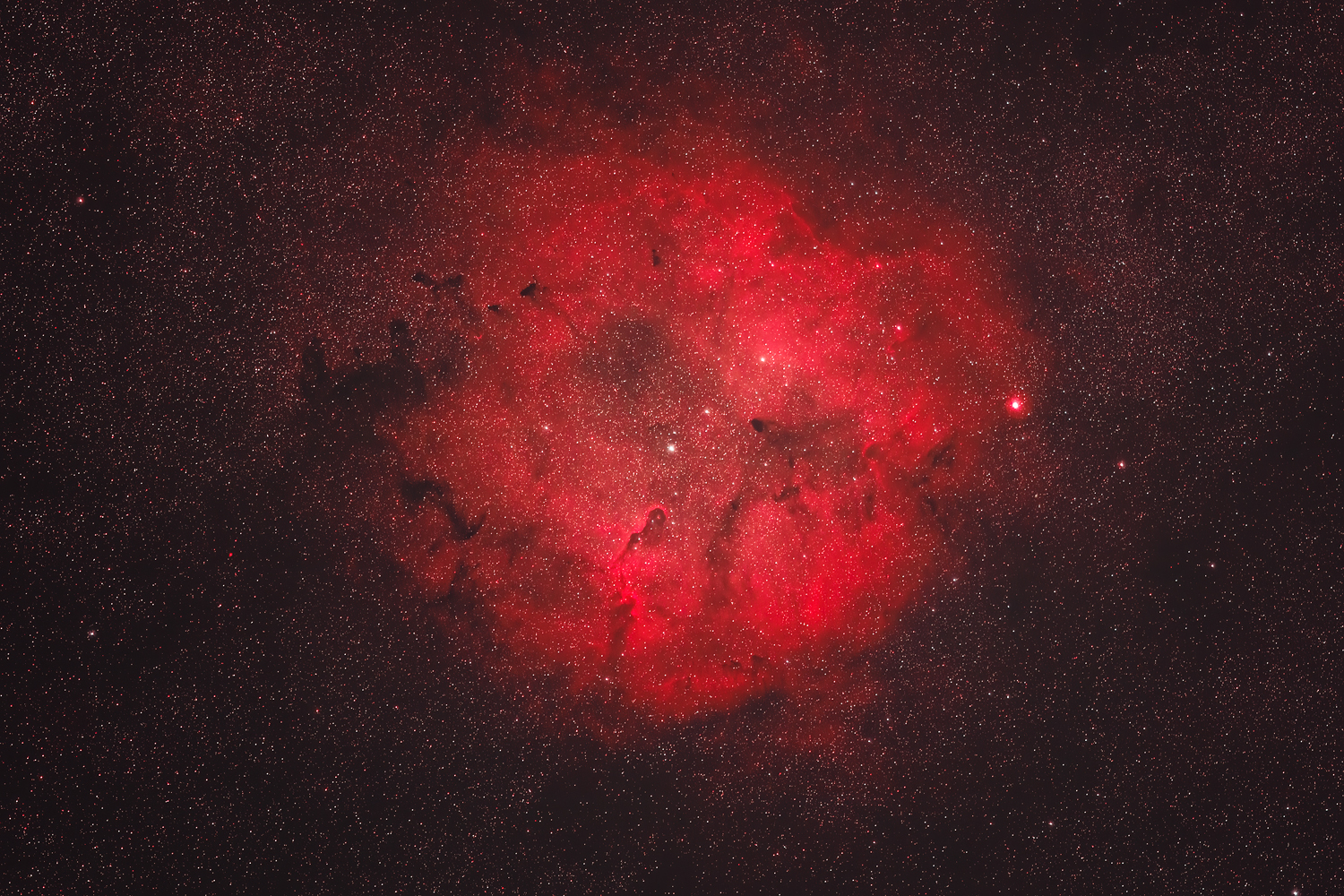
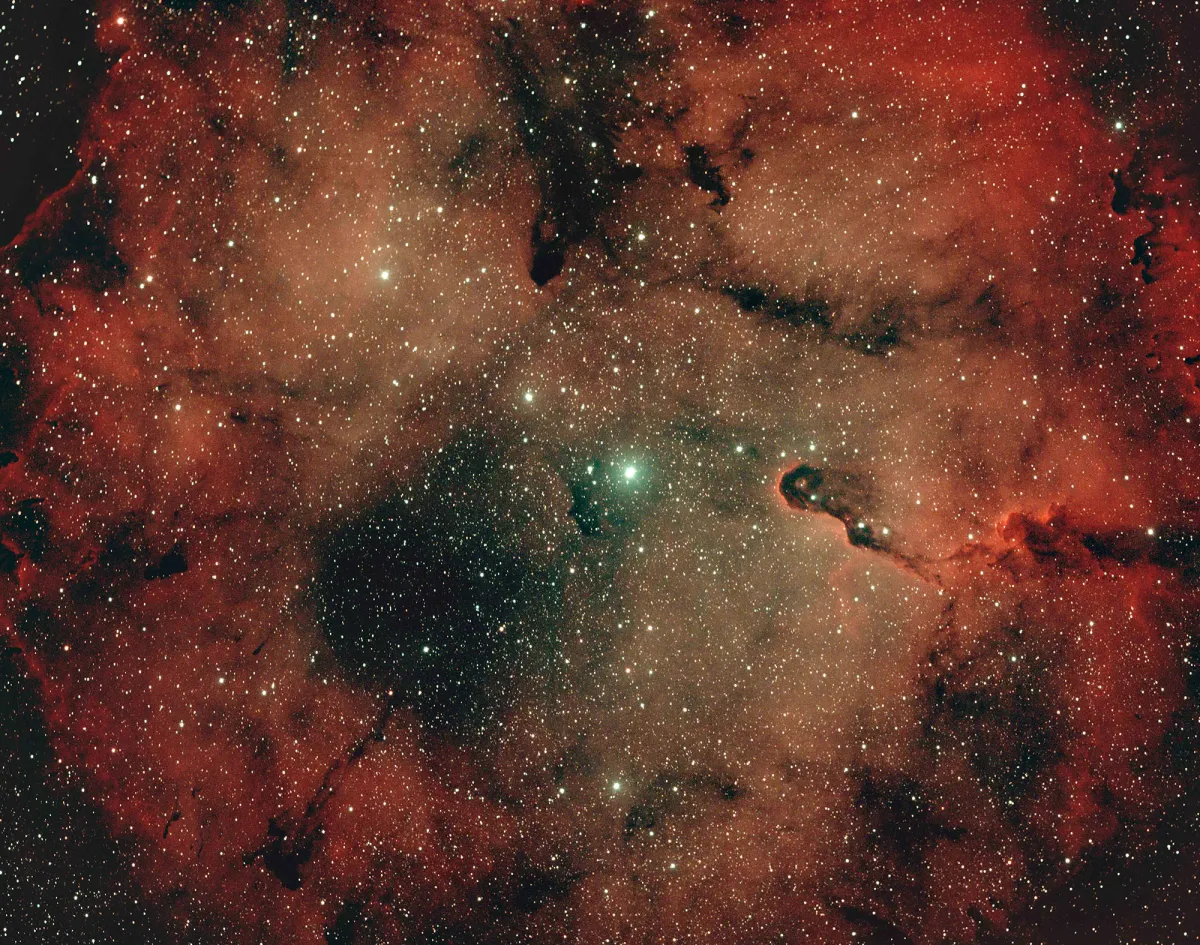
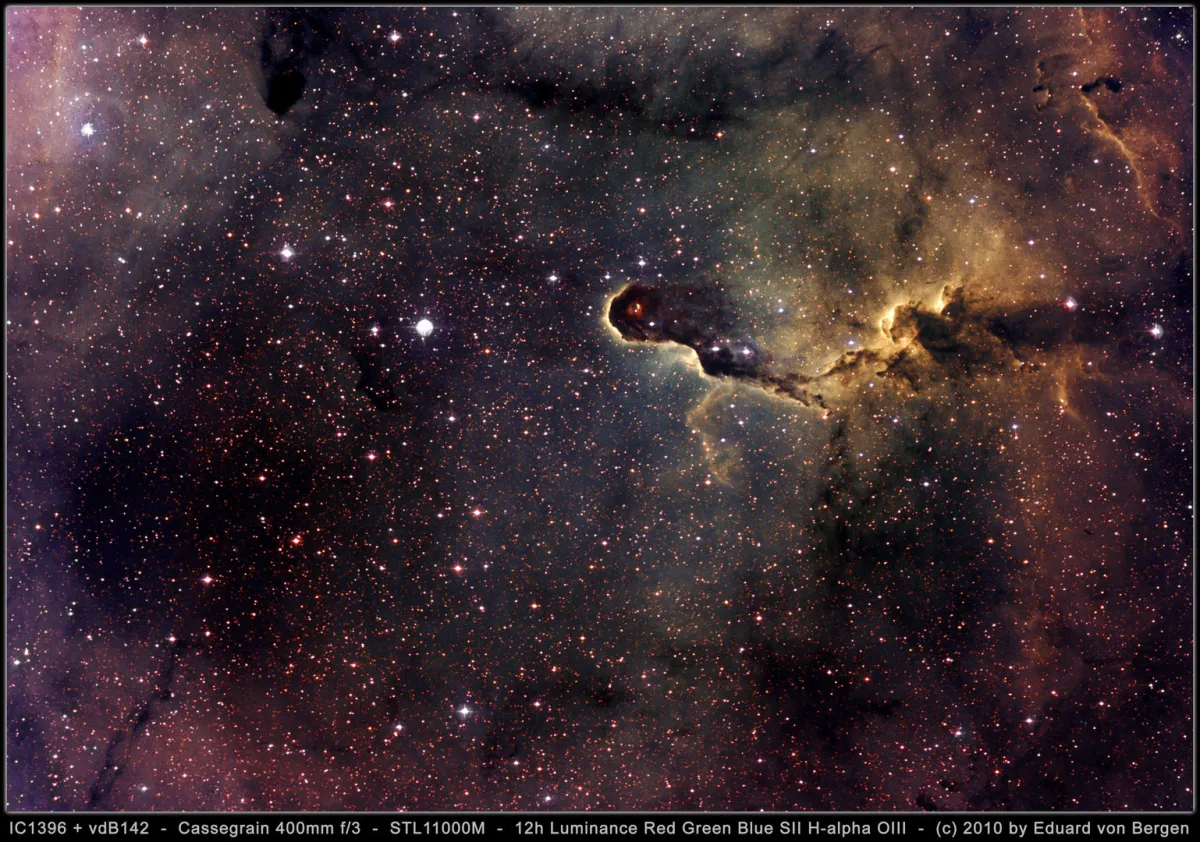
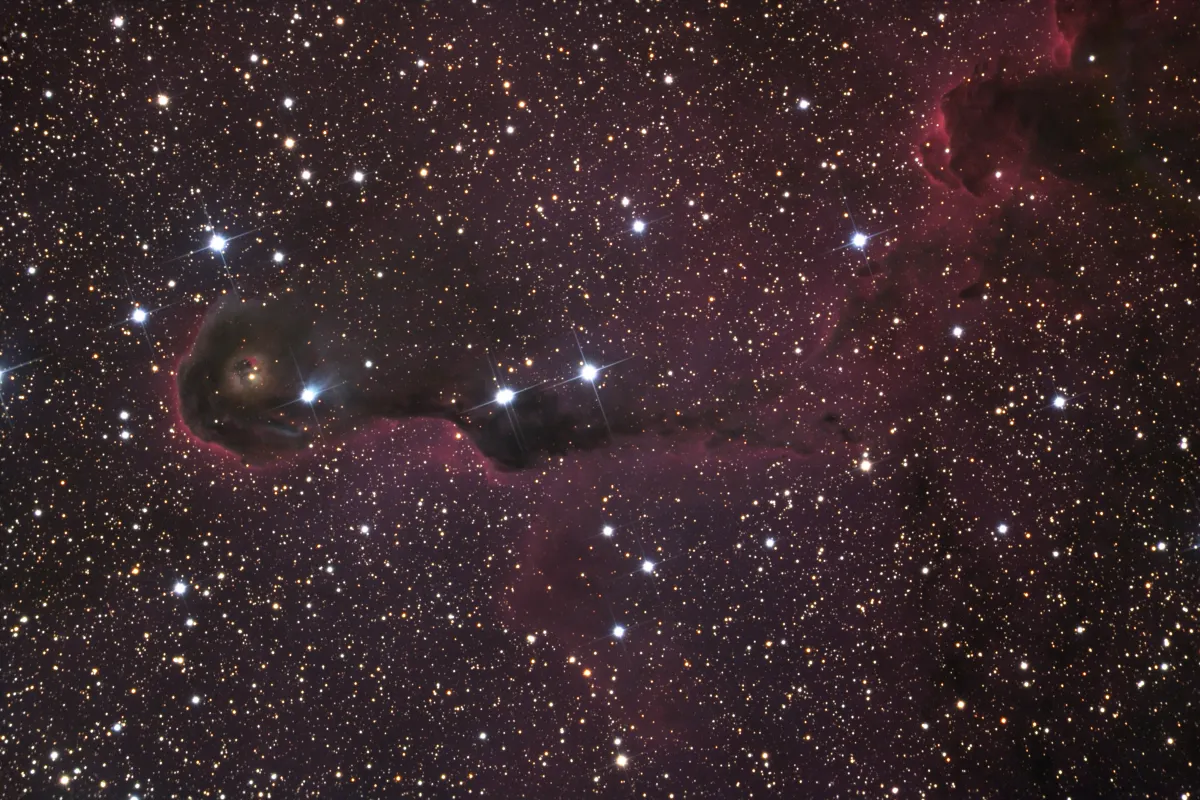
History
The galactic nebula IC 1396 was discovered photographically in August 1893 by the astronomer Edward Barnard. [196] The Canadian astronomer Sidney van den Bergh discovered a reflection nebula on the photo plates of the "Palomar Sky Survey" in the elephant trunk near the star BD + 57 ° 2309 (HD 239710), which he recorded as vdB 142 in his 1966 catalog of reflection nebulae. He noted: Type I-II (star partly inside, partly outside the nebula), moderate brightness, colour blue, very strong absorption, radius 0.3 '(red) to 0.6' (blue). [255]
Physical Properties
IC 1396 is a large H-II region with an angular diameter of about 3°, which is home to areas of active star formation, so-called globules. The most noticeable globule is the Elephant Trunk Nebula (also often referred to as IC 1396A). This is illuminated by the trapezoid-like, variable O-type multiple star system HD 206267 located 4.5 pc away (see Fig. 3). According to Gaia DR2 measurements, this star is 945+90-73 pc from Earth. The main structure of IC 1396A measures approximately 5.4 arcminutes (about 1.4 pc) in diameter. Behind it, more dark globules and ionized, glowing gas extend over half a degree. This structure is only a small part of the large, bubble-shaped nebula around the star cluster Trumpler 37 or Collinder 439, which typically contains many variables for a young star cluster. [360, 361]
| Name | RA | Dec | Type | Dim | MD | Dreyer Description | Identification, Remarks |
|---|---|---|---|---|---|---|---|
| IC 1396 | 21 38 54.0 | +57 29 20 | EN | 170 × 140 | 0.800 | Neb part of M. Way | LBN 451/452; SG 1.19 |
| IC 1396 A | 21 35 30.0 | +57 23 00 | EN | 14 × 2 | Neb part of M. Way | LBN 452 | |
| IC 1396 B | 21 34 30.0 | +57 28 00 | EN | 12 × 4 | Neb part of M. Way | LBN 451 |
Dark Nebulae
| Name | Type | RA (J2000.0) | Dec (J2000.0) | Rvel [km/s] | z | Size ['] | Identifiers |
|---|---|---|---|---|---|---|---|
| Barnard 160 | DNe | 21h 38m 12s | +56° 14' 00" | 31 × 31 | Barnard 160; LDN 1088; TGU H585; TGU H585 P1; [DB2002b] G98.34+2.88 | ||
| Barnard 161 | DNe | 21h 40m 24s | +57° 49' 00" | 4.5 | 0.000015 | Barnard 161 | |
| Barnard 162 | DNe | 21h 41m 12s | +56° 19' 00" | Barnard 162 | |||
| Barnard 163 | DNe | 21h 42m 15s | +56° 43' 44" | 4.6 | 0.000015 | Barnard 163; LDN 1106 | |
| Barnard 365 | DNe | 21h 34m 54s | +56° 43' 00" | Barnard 365 | |||
| Barnard 367 | DNe | 21h 44m 36s | +57° 12' 00" | 5 × 5 | Barnard 367; LDN 1113; [DB2002b] G99.65+3.02 |
Finder Chart
The galactic nebula IC 1396 is located in the constellation Cepheus, which is best visible from April to January.
